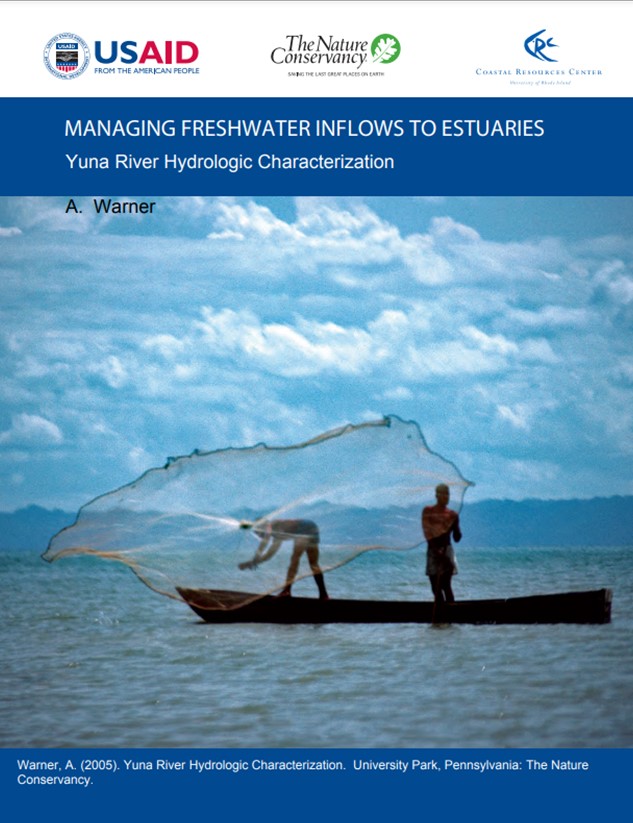| Author | Warner, A. | |
| Accessioned date | 2024-02-02T01:37:39Z | |
| Available date | 2024-02-02T01:37:39Z | |
| Year | 2005 | |
| Citation | Warner, A. (2005). Yuna River hydrologic characterization. University Park, Pensilvania: United States Agency for International Development (USAID); The Nature Conservancy (TNC). Recuperado de: | es |
| URI | https://bvearmb.do/handle/123456789/3978 | |
| Abstract | This write-up summarizes a coarse hydrologic characterization of the Yuna River and tributaries and is to be combined with a water budget and ecological summary of the Yuna River watershed and associated Samana Bay system. These reports are being developed concurrently and will support the development of a more comprehensive site profile of the basin and bay. A description of the watershed – including its major tributaries and Samana Bay – is presented in the water budget document. The purpose of this analysis is to provide a brief characterization of the natural patterns of river flows into Samana Bay and to assess whether or not those patterns have been substantially altered during the past four decades. This information combined with the ecological summary and the water budget will help identify relationships between river flows and important biological processes and habitat conditions, and help identify whether or not changes have occurred in ecologically important aspects of the river’s flow regime and the freshwater inputs to Samana Bay. | es |
| Language | English | es |
| Published | University Park, Pensilvania: United States Agency for International Development (USAID); The Nature Conservancy (TNC) | es |
| Rights | © United States Agency for International Development (USAID); The Nature Conservancy (TNC). | es |
| Subject | Recursos naturales - República Dominicana | es |
| Subject | Recursos hídricos | es |
| Title | Yuna River hydrologic characterization | es |
| Material type | Text | es |
| Type of content | Technical report | es |
| Access | Open | es |
| Audience | Technicians, professionals and scientists | es |


